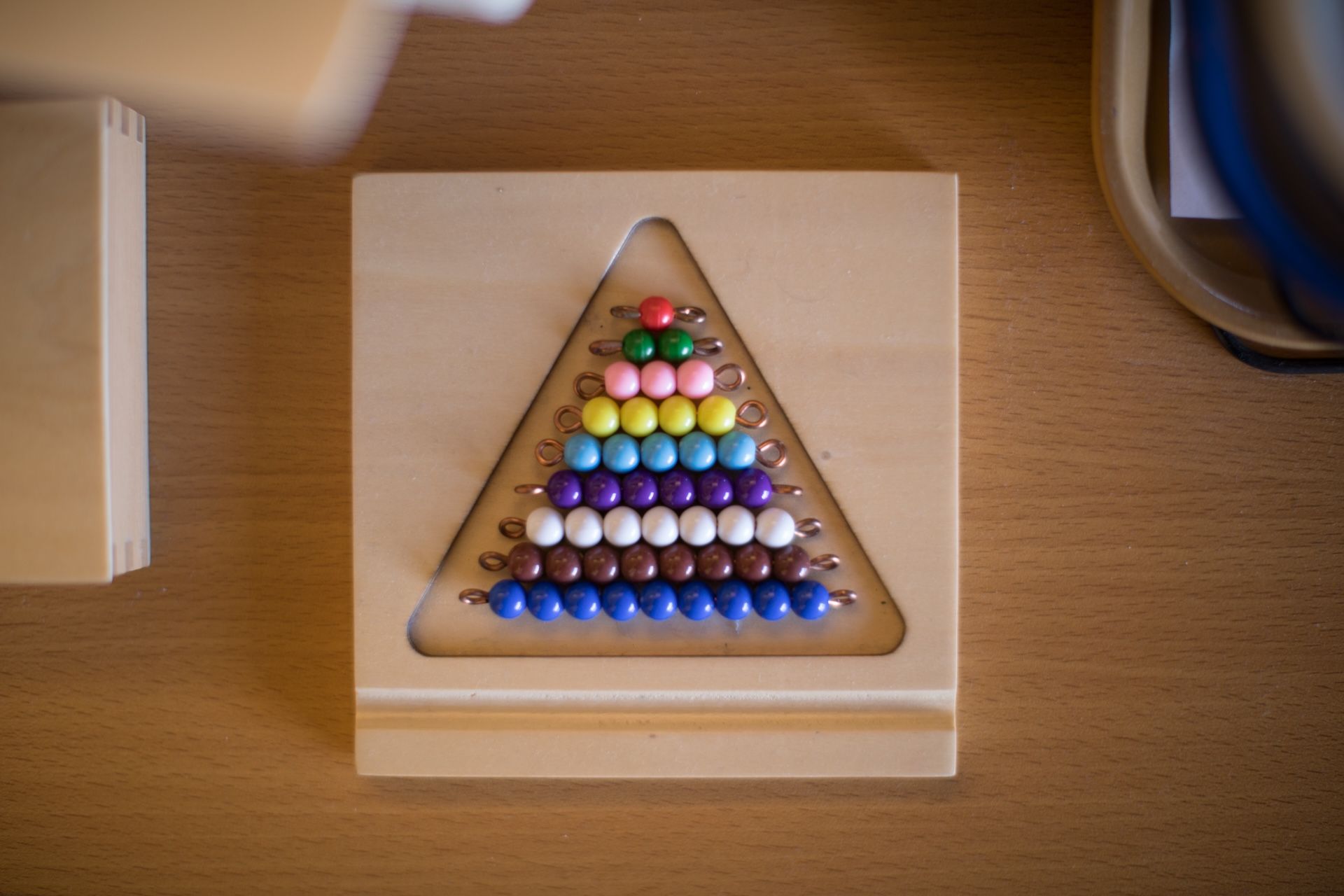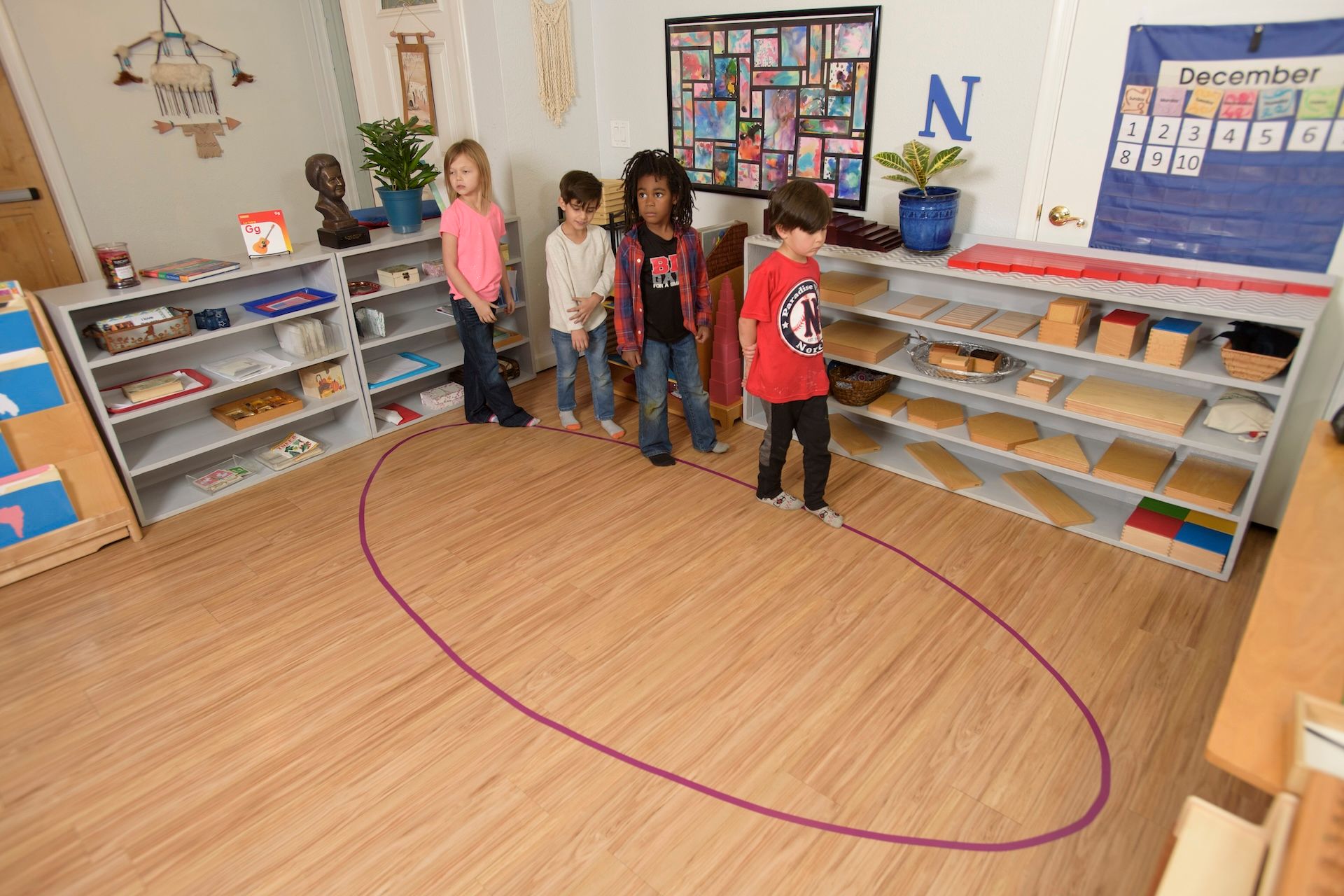
The Montessori approach to learning extends easily into the home. We’ve talked about planned units, and ways to use things like the garden, but what else can you do? Learning isn’t a routine process, and unless your home is set up to create opportunities to learn, it won’t happen. Some things you can do to better emphasize learning in your home include; keeping to an organizational scheme, emphasizing courtesy, and providing activities which develop concentration.
Organization
The easiest thing you can do to bring Montessori into your home, and create learning opportunities, is to make sure that your home is an organized space. Children need the structure in their play; they need to know where to get things, and where to put things when they have finished with them. In the bedroom, this can take the form of lower shelves and drawers. In the kitchen, a stepping stool is a simple addition which allows children to reach a designated space for snacks and other goods. We touched on the idea of creating a child-sized space in our article on designing a Montessori style bedroom for toddlers, but the idea extends to the whole home.
If a child knows what they want to do for play, but doesn’t know where to get the materials, then they will either come to you or give it up. If they come to you, then they are not learning how to be self-directed. That means you are having to do extra work, and your child is getting less of a benefit. You can’t anticipate every need for your child, but you can present them with a variety of choices for activities that they can do.
Common Courtesies
Children of all ages learn by example. It is important that you be a model for proper interactions with others. If children see you keeping things clean, they will try to keep things clean. Try and go over some common scenarios that your children will face. What do you do when meeting new people for the first time? How can you ask someone to play a game with you? How do you let someone know you don’t want to play now? Children will learn the nuances of these interactions in time, but if you work with them, then they will learn them all the faster.
How you model dealing with stress and negative emotions is very important. If you make it a habit to articulate your feelings, and to express them in a calm clear way, then you children will adopt a similar response. To this end, we recommend having space in the home where you, and the children, can sit down and work through problems. It could take the form of a small corner table or even just a clear area with a rug. Conflict resolution is a learned behavior, and which can be modeled by you very easily.
Choosing the Right Activities
Once you have a clear organized space and understand what behaviors you want to model, it is important to give kids the space to work freely. Make sure that your child’s work environment is largely free of distractions. Allow them to focus on one activity at a time, and to push their attention span to its limits. When you intervene in play, make sure that it is to push the child further, or to give appropriate feedback.
This doesn’t mean that your child has to be isolated. Many kids like working at the kitchen table while dinner is being made, others like working in the living room surrounded by family. Observe your child, check the spaces they work in, and adjust your home so that it promotes working in those spaces. Make sure that there will be minimal interruptions unless your child wants to team up and solve a problem.
Hopefully, this gives you some ideas about how you can create a Montessori atmosphere at home. Ultimately, if you model hard work, your children will value hard work. If you prove that you value their education, then they will value their education.
The post Montessori in the Home: Tips for All Ages appeared first on Pebblecreek Montessori.
Hours
MONDAY - FRIDAY
HALF DAY: 8:30a – 12 noon
ACADEMIC DAY: 8:30a – 3:30p
EARLY CARE: 7:00a – 8:30a
AFTER CARE: 3:30p – 6:00p
OFFICE: 8:00a - 4:00p
Programs
Connect
Pebblecreek Montessori




